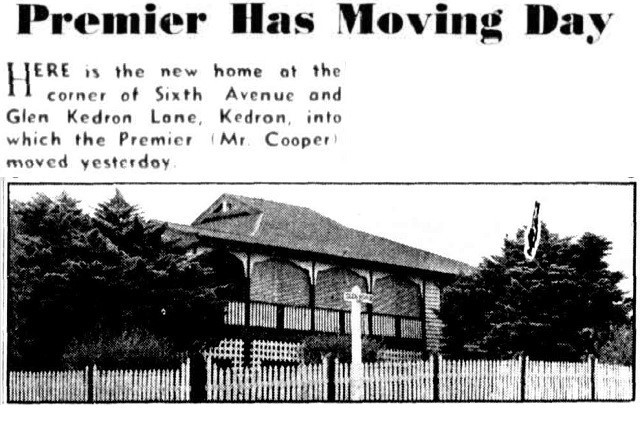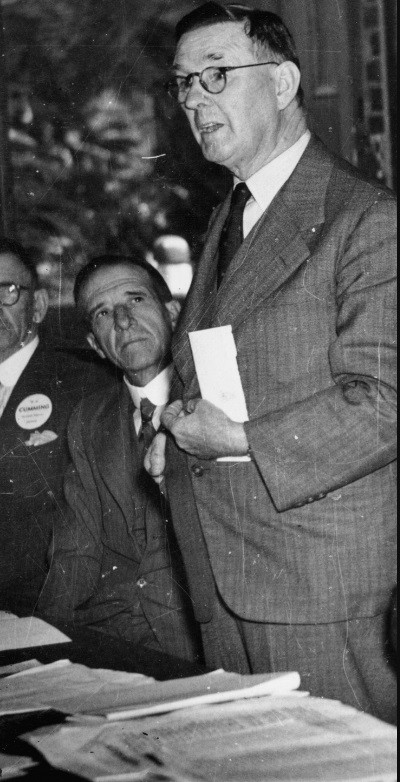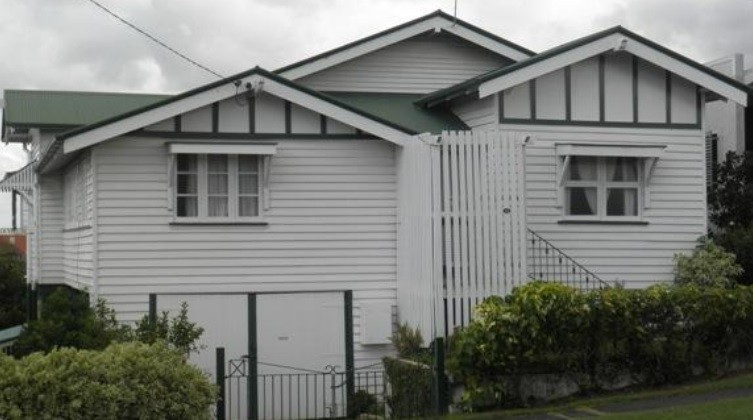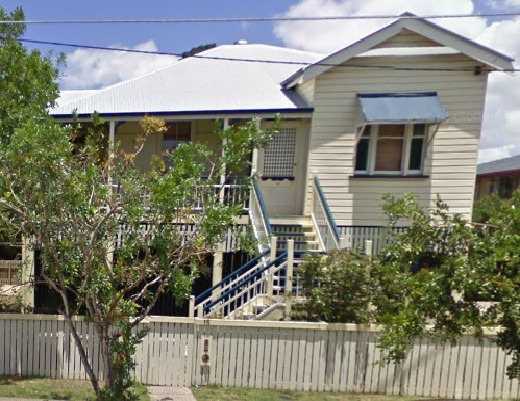Premier homes
By Stephanie Ryan, Research Librarian, Library Client Services | 14 March 2023
The question seemed absurd when the telephone enquirer asked. She wanted a photograph of the Premier’s house when he moved to Brisbane during World War ll. The photo had to be of that period. Frank Cooper was Queensland Premier 1942-1946. From today’s perspective it seemed impossible, almost an invasion of privacy that such a photograph would be generally available beyond a personal collection. He was also Premier during what appeared to be the most dangerous period of our history to date, and when security of the State’s leader should have been a priority. However, surprisingly, and quickly a search of Trove historical newspapers produced a remarkable result.

Premier Frank Cooper’s home 1944-1949
Premier has moving day, Sunday Mail 31 December 1944 p3.
The news item was at pains to explain how it was an ordinary block and home. Not only was the address given in full, but the street sign and photograph made it instantly recognisable. How much security was there? Well, the ‘Dangerous Dogs’ notice, we are informed, was ‘faded’ and misleading, as there were no dogs. There was ‘one special privilege’ however, a telephone.

Queensland Premier Frank Cooper addressing an audience, 1940. State Library of Queensland. Negative number: 194433
Who was Frank Cooper?
Frank Cooper was born in Blayney NSW. In 1909 he moved to Ipswich with the Westinghouse Brake Co. There, he became increasingly involved in the labour movement and then worked as a journalist. He held many positions as an elected member of the Labor Party before becoming Premier on 16 September 1942.
‘His constructive role as a wartime premier has been overshadowed by the achievements of his vigorous predecessor Forgan Smith and by those of his able successor Hanlon,’ Manfred Cross stated in the Australian Dictionary of Biography entry on Frank Cooper. These were premiers during the challenging times of the Depression, WWII, and Post War recovery.
Residence: Ned Hanlon
Frank Cooper’s Kedron home has been replaced by flats, but Ned Hanlon’s house remains. Ned Hanlon was Queensland Premier 1946-1952. His home in Guthrie Street, Paddington, has been heritage listed even though it is a modest interwar house. As with the other Premiers, his address was freely available. He, like the others, was named on the electoral rolls.

Ned Hanlon’s home
42 Guthrie Street Paddington, Heritage Places
Residence: William Forgan Smith
William Forgan Smith was Queensland Premier 1932-1942. His home during this time was Airlie, Park Road, Yeronga. It has since been demolished. However, Mrs Forgan Smith used it as a base for fund raising where, for example, mothers from the area could attend meetings to set up a creche and kindergarten. A previous home, when Forgan Smith was initially a member of Parliament, was Invergowrie, in Hall Street, Northgate. There for a while, William Forgan Smith and family lived with his father until the father returned to Scotland. Both house names reflected the family’s link to home in Scotland. The house is a simple pre-World War I asymmetrical bungalow.

This was the Forgan Smith home during the 1920s.
15 Hall Street Northgate, Google Street View 2009 (Google 2022)
Then and now: how we lived
It was not just the homes of these Premiers which were smaller, simpler and open to the community without high fences and dense foliage, with their addresses publicly accessible and neighbours generally welcomed. Their homes were indicative of the way many then lived without the constant fears of burglary, assault, or other invasions of privacy. In a period when private transport was not common, many people lived within their neighbourhood and its institutions, such as the local churches and clubs. Community events such as fetes, flower shows, dances, school and sport events meant the community came to know each other. The extent to which these security concerns were absent, even for these politicians at this very public level, in threatening times, is now a source of astonishment. ‘The past is a foreign country; they do things differently there’. The go-between/ L.P. Hartley.
Explore collections
State Library has digitised many images of Queensland life. Use One Search to find digitised images of place and time, and discover what life was like around sport, work, social events and more. Type your keyword, select ‘State Library digital collections’ and refine by resource type ‘images’.
Find out more about Queensland Premiers from 10 December 1859, accessible at State Library of Queensland
Was it all good? Check the NFSA film The way we live and the comments from today’s viewers about the difference.
More information
One Search catalogue - http://onesearch.slq.qld.gov.au
Comments
Your email address will not be published.
We welcome relevant, respectful comments.